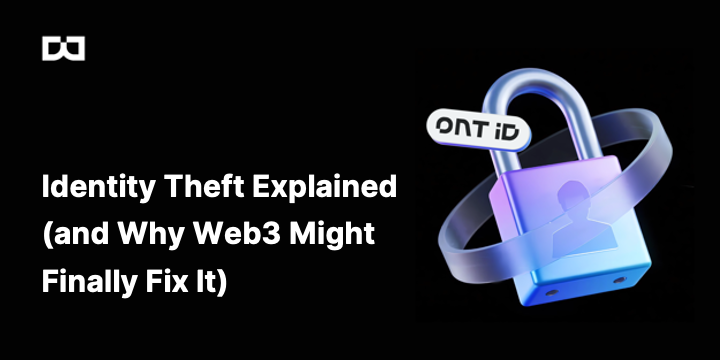Somewhere right now, someone is logging into a bank account that doesn’t belong to them. They didn’t guess the password, and they didn’t break into the bank. They just bought your data — your name, email, social security number, maybe even your mother’s maiden name — from a hacker on the dark web. That’s identity theft in 2025, and it’s happening on a scale that’s hard to wrap your head around.
According to the FTC, Americans reported losing $10 billion to fraud in 2023, with identity theft leading the pack. It’s the modern version of pickpocketing, except instead of stealing your wallet, someone’s stealing your entire digital existence.
What Identity Theft Really Is
At its core, identity theft is someone pretending to be you. In the Web2 world, that usually means taking enough of your personal information to open a loan, drain your bank account, or file taxes in your name. The playbook hasn’t changed much in two decades — but the surface area has exploded.
- Phishing emails dressed up as your bank.
- SIM swaps where a scammer convinces your phone carrier to hand over your number.
- Centralized database hacks that leak millions of identities in one go. (Think Equifax, but it happens almost weekly now.)
The problem is simple: the internet was never built to prove who you are. We’ve been duct-taping passwords, cookies, and secret questions on top of a system that wasn’t designed for trust.
Why It’s Getting Worse
The more services that ask you to hand over your identity, the more places it can be stolen. Every time you sign up for something with your email, birth date, and phone number, that data gets stored in some corporate silo. Hack one of those silos, and the attacker isn’t just inside your account — they’re inside millions of accounts.
And while regulators keep telling companies to do better, the truth is simple: centralized identity systems are always going to be a honeypot for hackers.
The Web3 Shift
This is where things start to get interesting. Web3 isn’t just about trading coins on decentralized exchanges. It’s about rethinking ownership — not just of money, but of identity.
- Decentralized Identity (DID): Instead of hundreds of logins scattered across the web, you carry your identity with you, cryptographically secured, and decide who gets to see what.
- Self-Sovereign Identity (SSI): You’re not “logging in with Google” anymore. You are the login.
- Zero Knowledge Proofs (ZKPs): Imagine proving you’re over 18 without handing over your birthday. That’s not science fiction — that’s ZKPs in action.
In this model, your personal data doesn’t live on some company’s server, waiting to be stolen. It lives with you. And when someone asks for proof — whether it’s your age, your credit score, or your right to vote — you can share only what’s needed, nothing more.
How to Protect Yourself Right Now
Web3 might be the future, but identity theft is still very much a present problem. A few simple steps can dramatically cut your risk:
- Use a password manager and make sure every login is unique.
- Turn on two-factor authentication everywhere (preferably with an authenticator app, not SMS).
- For crypto wallets, stick to hardware wallets and never share private keys.
- Be skeptical of anyone — anyone — who asks you to “verify” sensitive information over email or text.
- Start experimenting with DIDs and self custody solutions. Even dipping your toes in now puts you ahead of the curve.
The Bigger Picture
Identity theft isn’t going away. As long as our data lives in centralized silos, hackers will keep breaking in. What Web3 offers is a chance to redesign the entire system: to make identity something you actually own, instead of something dozens of corporations guard on your behalf.
The promise here isn’t just fewer phishing scams. It’s a future where your identity can’t be stolen in the first place — because it’s finally, truly yours.

